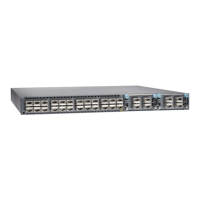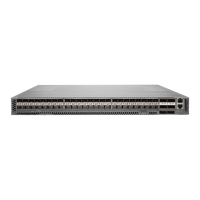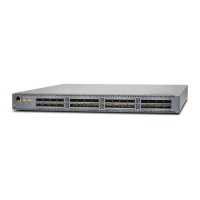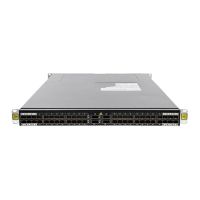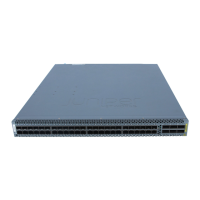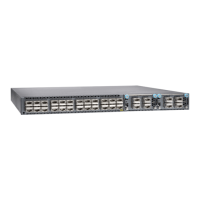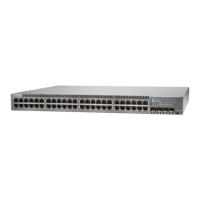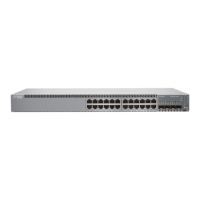Before you begin removing a transceiver from a device, ensure that you have taken the
necessary precautions for the safe handling of lasers (see Laser and LED Safety Guidelines
and Warnings).
Ensure that you have the following parts and tools available:
•
An antistatic bag or an antistatic mat
•
Rubber safety caps to cover the transceiver and fiber-optic cable connector
•
A dust cover to cover the port or a replacement transceiver
Figure 40 on page 115 shows how to remove a QSFP+ transceiver. The procedure is the
same for all types of transceivers except the QSFP28 and CFP transceivers.
To remove a transceiver from a device:
1. Place the antistatic bag or antistatic mat on a flat, stable surface.
2. Wrap and fasten one end of the ESD wrist strap around your bare wrist, and connect
the other end of the strap to the ESD point on the switch.
3. Label the cable connected to the transceiver so that you can reconnect it correctly.
WARNING: Do not look directly into a fiber-optic transceiver or into the
ends of fiber-optic cables. Fiber-optic transceivers and fiber-optic cables
connected to transceivers emit laser light that can damage your eyes.
WARNING: Do not leave a fiber-optic transceiver uncovered except when
inserting or removing a cable. The rubber safety cap keeps the port clean
and prevents accidental exposure to laser light.
CAUTION: Do not bend fiber-optic cables beyond their minimum bend
radius.An arcsmaller than a fewinches in diametercan damage the cables
and cause problems that are difficult to diagnose.
4. Remove the cable connected to the transceiver. Cover the transceiver and the end of
each fiber-optic cable connector with a rubber safety cap immediately after
disconnecting the fiber-optic cables.
Copyright © 2019, Juniper Networks, Inc.114
QFX5110 Switch Hardware Guide
